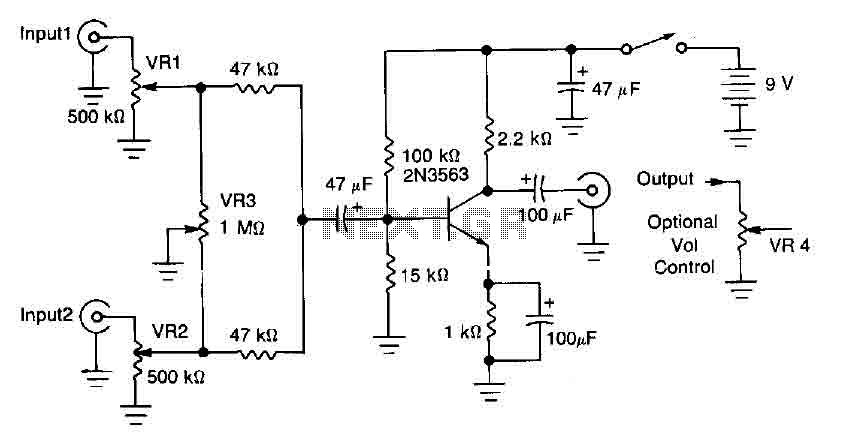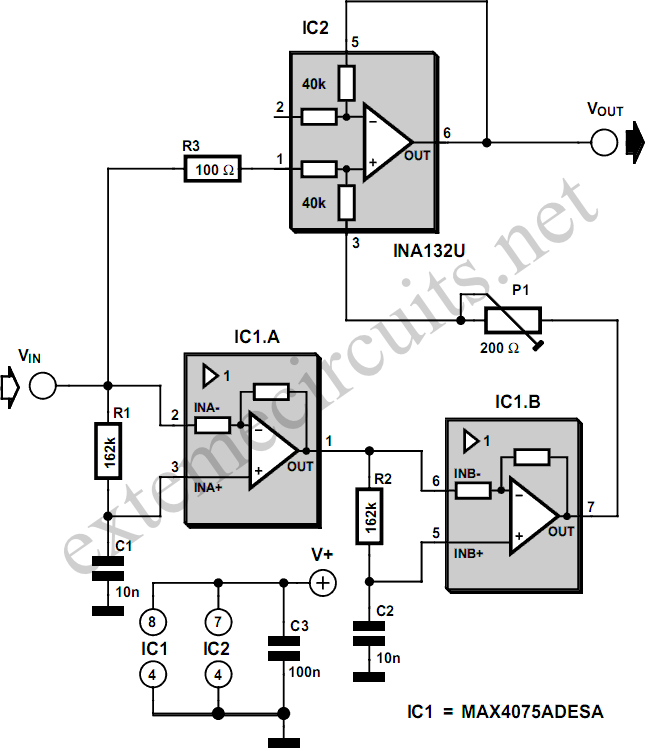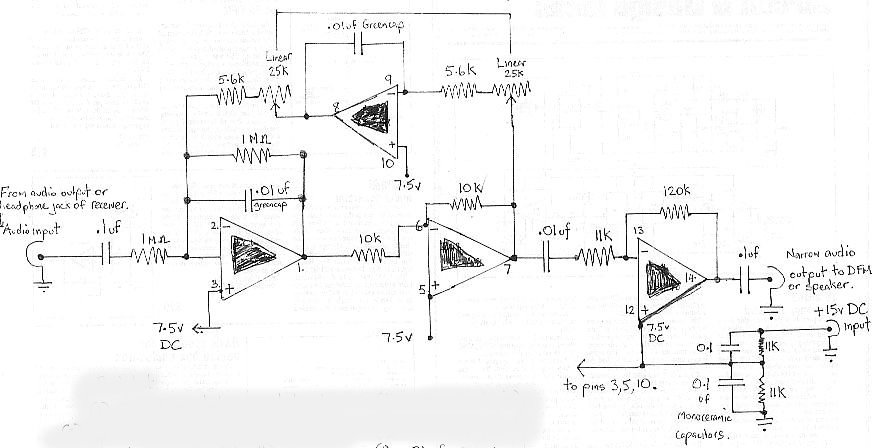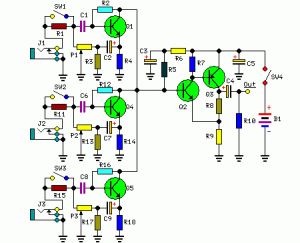
One transistor audio mixer (2N3563)

This circuit mixer features internal amplification using a 2N3563 transistor. Two input signals can be independently adjusted via VRI and VR2. The VR3 balance control allows for the attenuation of one signal while the other remains active. Additionally, the transistor provides gain, and the level of the combined output signal is regulated by VR4.
The circuit mixer operates by utilizing the 2N3563 transistor, which serves as the primary amplification component. The two input signals are fed into the mixer, where they can be modified independently using variable resistors VRI and VR2. This flexibility allows for precise control over the amplitude of each signal before they are combined.
The VR3 balance control is critical in this design, as it enables the user to selectively diminish one input signal while maintaining the integrity of the other. This feature is particularly useful in audio applications where blending multiple sound sources is required, allowing for a seamless mixing experience.
The combined output signal's gain is determined by the characteristics of the 2N3563 transistor, which is designed to operate efficiently within the specified frequency range. The output level can be finely tuned using VR4, ensuring that the final mixed signal is at the desired amplitude for further processing or amplification.
Overall, this circuit mixer design is well-suited for applications where precise control over multiple input signals is necessary, providing a robust solution for audio mixing and signal processing needs.This circuit mixer has an internal amplification with 2N3563 transistor. The two input signals can be independently controlled by VRI and VR2. The VR3 balance control is used to remove a signal while the other melted. The transistor provides gain and level of combined output signal is controlled by VR4.
The circuit mixer operates by utilizing the 2N3563 transistor, which serves as the primary amplification component. The two input signals are fed into the mixer, where they can be modified independently using variable resistors VRI and VR2. This flexibility allows for precise control over the amplitude of each signal before they are combined.
The VR3 balance control is critical in this design, as it enables the user to selectively diminish one input signal while maintaining the integrity of the other. This feature is particularly useful in audio applications where blending multiple sound sources is required, allowing for a seamless mixing experience.
The combined output signal's gain is determined by the characteristics of the 2N3563 transistor, which is designed to operate efficiently within the specified frequency range. The output level can be finely tuned using VR4, ensuring that the final mixed signal is at the desired amplitude for further processing or amplification.
Overall, this circuit mixer design is well-suited for applications where precise control over multiple input signals is necessary, providing a robust solution for audio mixing and signal processing needs.This circuit mixer has an internal amplification with 2N3563 transistor. The two input signals can be independently controlled by VRI and VR2. The VR3 balance control is used to remove a signal while the other melted. The transistor provides gain and level of combined output signal is controlled by VR4.





